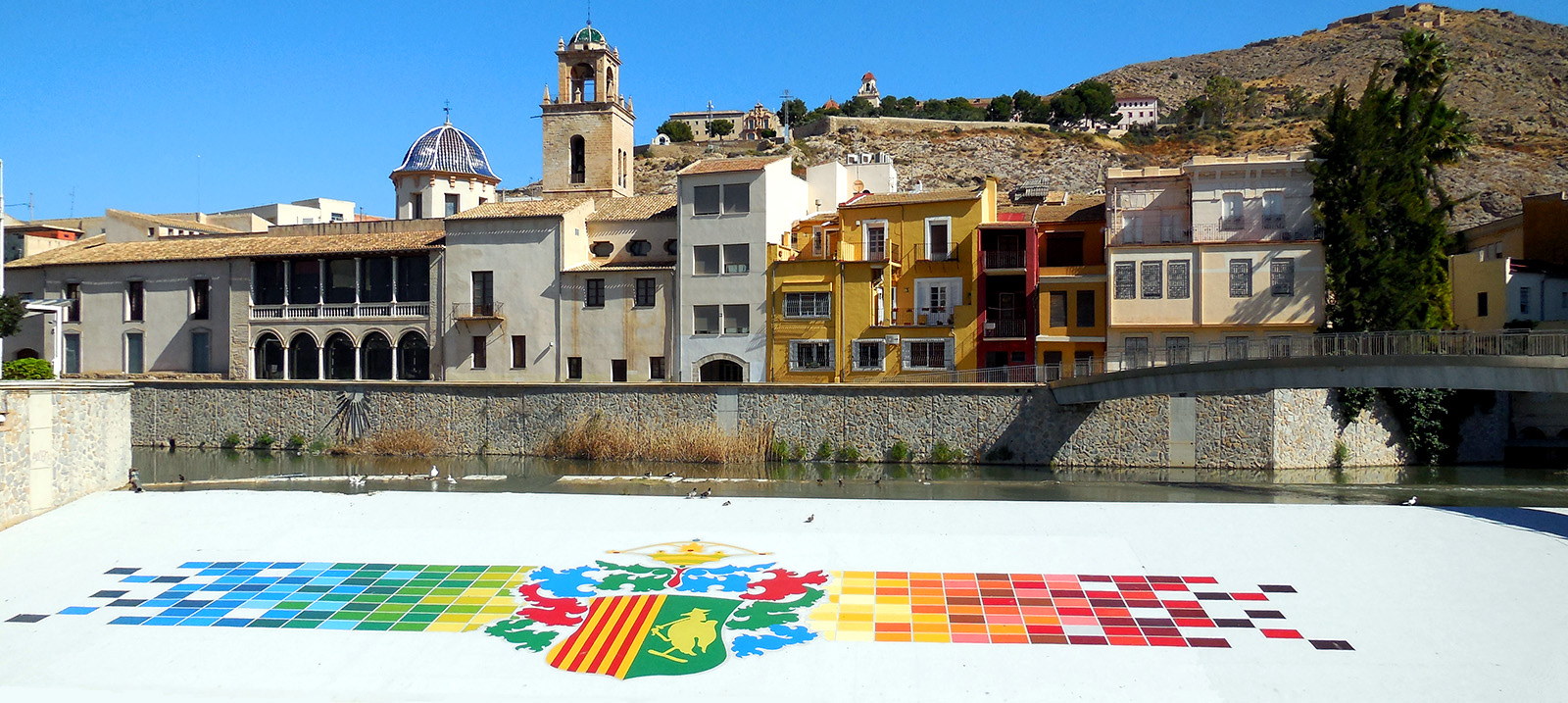

Orihuela, capital city of the Alicante region of the Vega Baja of the Segura River, is according to its extension, the greater municipal term of the province of Alicante and the second in all the Valencian Community.
Its urban helmet, declared historical artistic group from the year 1969, is located to 59 km of Alicante and to 24 km of Murcia, with whose province limits. It extends to the sea with 16 km of coastline with excellent beaches and cliffs such as Playa Flamenca, Cabo Roig, La Zenia, Punta Prima, Campoamor and Mil Palmeras.

Its artistic heritage, with five national monuments in the city declared of Cultural Interest (Episcopal Palace, Church of Santiago Apóstol, Convent-Church-School of Santo Domingo, Church of Santas Justa and Rufina, Church-Cathedral of El Salvador), and Dozens of squares and buildings belonging to the eighteenth, nineteenth and early twentieth centuries strategically located throughout the city, make Orihuela an ideal destination both for those seeking to reconnect with history, and for those who want to relax between its various landscapes, routes and walking trails.
Through the streets of Orihuela have passed illustrious figures such as Jaime I, the Catholic Monarchs before launching their campaign in southern Spain or King Charles V who gave the Cathedral rank to the old church El Salvador. The famous story writer Christian Andersen, the painter Joaquín Agrasot, the archbishop Loaces, the holy preacher San Vicente Ferrer, Gabriel Miró and his most illustrious neighbor the poet Miguel Hernández.
We arrive at the city of Orihuela and, as soon as we cross the threshold of its doors, an impressive building welcomes us: it is the Santo Domingo Diocesan School, a former Dominican convent and a university of the 16th century. Known as "El Escorial del Levante", it is the largest national monument in the Valencian Community.
After him, located in the Hernandiano Corner, it is typical and charming, a house that was the home where one of the best Spanish poets of the 20th century lived: Miguel Hernández. Today, it awaits the visitor inviting him to enter and recreate, inside, the poetic halo that permeates each of its corners (SICTED). We walked and, almost without realizing it, we arrived at the Historical Center, where we found the Museum of Holy Week, a festival declared of International Tourist Interest, with works by Salzillo, Farinés, Díez, Guintin de Torre, Coullaut Valera, Sánchez Lozano, Galarza, Esteve , Bussy, Seiquer Zanón, Balaguer, Enrique Luis ... and works from the Orrico, Martínez, Maestre Sánchez and Vicente Gimeno workshops (SICTED). We continue our journey and we reach the main street of Ramón y Cajal, where the Cathedral and the Episcopal Palace rise in a cozy space. The one, not because it is one of the smallest Gothic cathedrals in Spain, ceases to show off its coquettish interior appearance. And the other, seat of the Diocesan Museum of Sacred Art (SICTED), proud of itself, offers us the beauty of its halls and the mastery of the great Velázquez, among others. Without losing the historical axis and, at a short distance, the Museum of The Wall (SICTED) transports, to those who enter it, the Islamic past of the city. Having traveled its more than 2,200 square meters, we return to the surface and, then, the most beautiful tower of the city, the Parish Church of Las Santas Justa y Rufina (XIV-XV century), stands before us showing us one of the oldest clocks in Spain (14th century).
We do not forget the Archaeological Museum (SICTED), because it offers us a sculptural work of singular importance: the "Cruz de los Labradores", the popular "Diablesa" (17th century), one of the most original processional steps in the world, with the image of the devil that represents sin. We arrived at another museum, that of the Reconquista (SICTED), created in 1985 by the Association of Moors and Christians Festivities "Santas Justa y Rufina", consists of two main spaces dedicated respectively to the Moorish side and the Christian side. They review different aspects of the Festival such as history, legend, comparsas, festive positions, music, etc.
From here, what else awaits us? The third of the Gothic churches, that of Santiago Apóstol (14th century) and the Sanctuary of Nuestra Señora de Monserrate (BIC) (17th-18th centuries), patron saint of the city. Finally, we arrive at the San Isidro neighborhood where we can visit the "Hernandian open-air museum" and see the mural paintings that cover the facades of its streets with art and poetry. A must to discover the poetic and vital footprint of Miguel Hernández.
©Copyright 2025. All Rights Reserved.